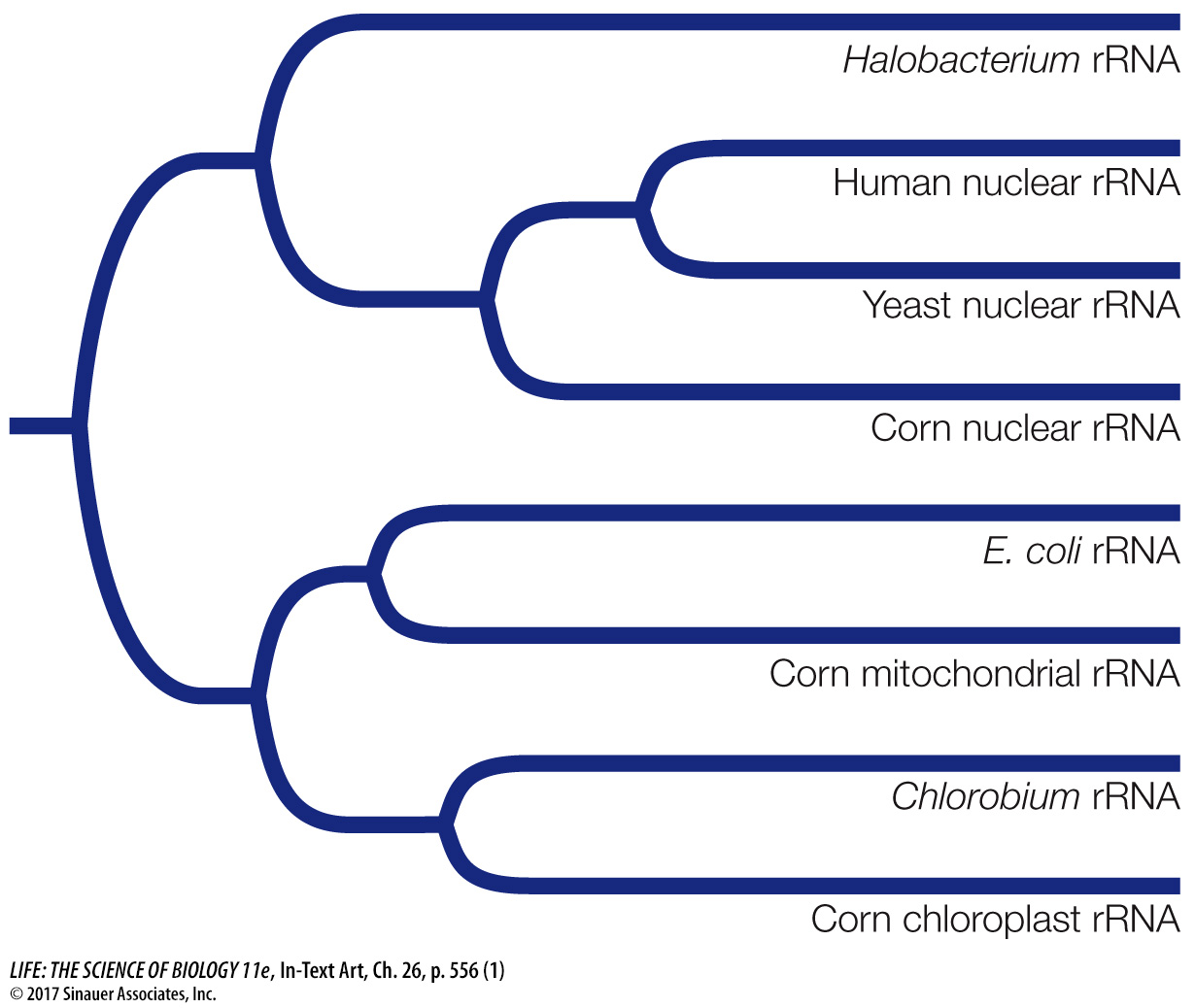recap
26.1 recap
The modern eukaryotic cell probably arose from an ancestral prokaryotic archaean in several steps, including the origin of a flexible cell surface and the enclosure of the genetic material in a nucleus. Later, endosymbioses of proteobacteria and cyanobacteria led to the origins of mitochondria and chloroplasts.
learning outcomes
You should be able to:
Explain the use of the term “protist,” and describe the relationships of major protist groups to other eukaryotes.
Summarize the major changes that were important in the evolution of the eukaryotic cell.
Explain how major changes in Earth’s environment affected the evolution of the eukaryotic cell.
Infer the history of genes based on whether their origins are nuclear, mitochondrial, or chloroplastic.
1.
Why was the development of a flexible cell surface a key event for eukaryote evolution?
Loss of the stiff prokaryotic cell wall allowed infolding of the cell membrane, greatly increasing the surface area of the cell without increasing its volume. These infoldings also allowed for greater structure within the cell and eventually led to the evolution of the endoplasmic reticulum.
2.
Explain how increased availability of atmospheric oxygen (O2) could have influenced the evolution of the eukaryotic cell.
When atmospheric oxygen concentrations were low early in Earth’s history, organisms could use only anaerobic respiration. Increased availability of atmospheric oxygen allowed the evolution of aerobic respiration, which proceeds more rapidly and harvests energy more efficiently than anaerobic respiration does. But as cells increased in size, they would decrease in surface area-
Background for Questions 3–

3.
Why are the three rRNA genes of corn not one another’s closest relatives?
The three rRNA genes of corn are not one another’s closest relatives because the nuclear, mitochondrial, and chloroplast genomes have different origins, and the relationships shown in the tree reconstruct the endosymbiotic events that gave rise to mitochondria and chloroplasts.
4.
Why is the relationship of the mitochondrial rRNA gene of corn to the rRNA gene of E. coli closer than it is to the nuclear rRNA genes of other eukaryotes? Can you explain the relationship of the rRNA gene from the chloroplast of corn to the rRNA gene of the cyanobacterium?
The mitochondrial genome of corn is more closely related to the genome of E. coli than it is to the nuclear genome of corn because the mitochondria were derived from an endosymbiosis with a proteobacterium. Likewise, the chloroplast genome of corn is more closely related to the genome of Chlorobium than it is to the nuclear genome of corn because the chloroplasts were derived from an endosymbiosis with a cyanobacterium.
5.
Explain why the term “protists” does not refer to a formal taxonomic group.
The term “protists” is used, for convenience, to refer to a diverse group of distantly related, polyphyletic microbial eukaryotes. Some protists are more closely related to each of the major groups of multicellular eukaryotes (including plants, fungi, and animals) than they are to one another.
The features that eukaryotes gained from prokaryotic archaea and bacteria have allowed them to exploit many different environments. This led to the evolution of great diversity among eukaryotes, beginning with a radiation that started in the Precambrian.